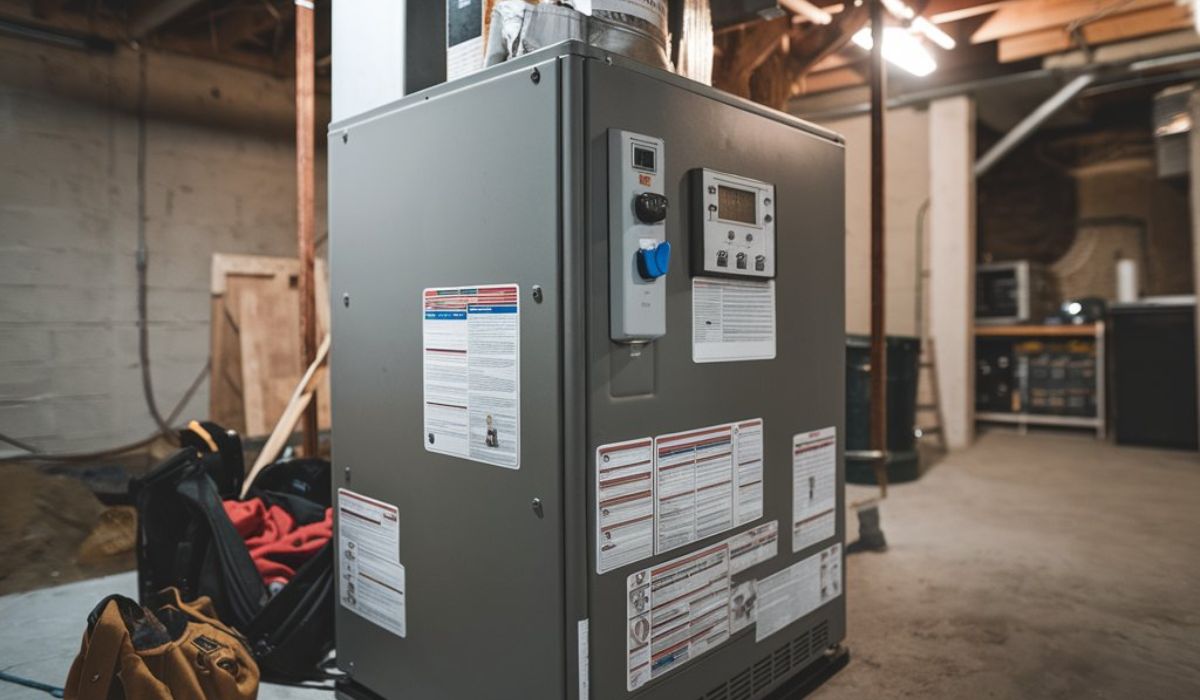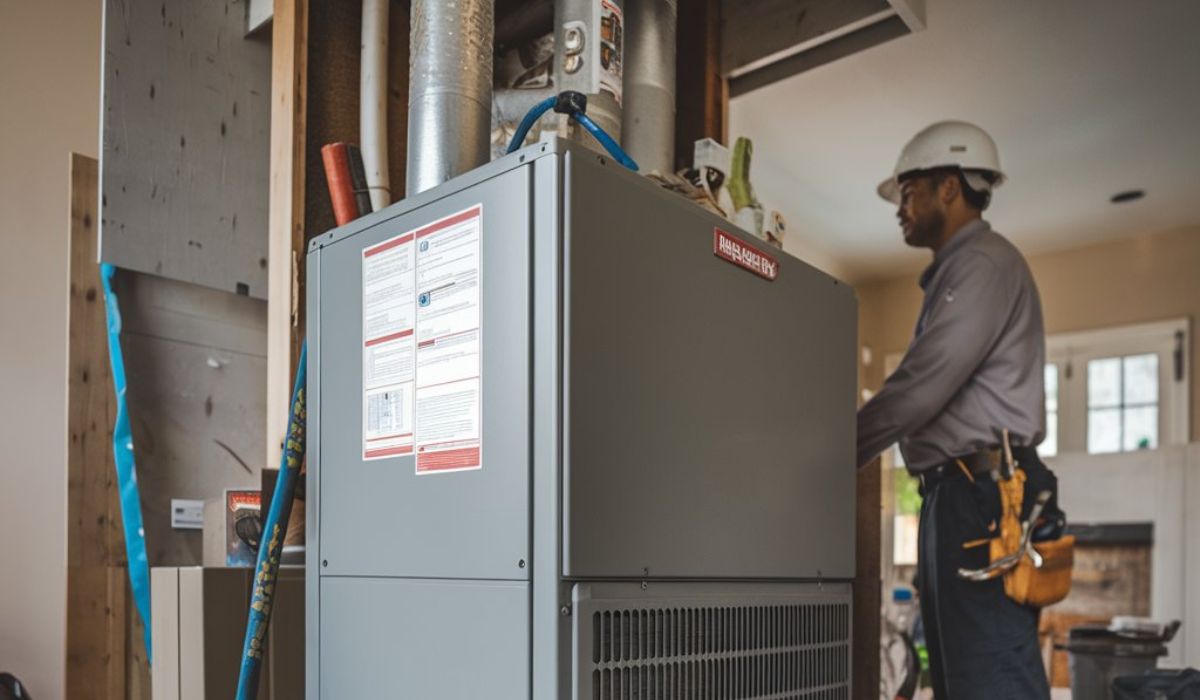When the cold weather rolls in, the last thing you want is to be caught in a house without a working furnace. But what if your current furnace has been on its last leg for years, and it’s time for a new one? Before making such a significant investment, it’s essential to understand what goes into the cost of a new furnace, the factors that can influence the price, and how to get the best deal.
This article will walk you through everything you need to know about new furnace cost and help you make an informed decision.
Factors Influencing New Furnace Cost

The cost of a new furnace can vary dramatically depending on several factors. Some of the primary elements that influence the final price include:
- Furnace Type: Different types of furnaces come with varying price tags. You may choose between gas, electric, or oil furnaces, with gas models generally being the most common and often more affordable.
- Size of Your Home: The size of your home plays a big role in determining the furnace size you need. A larger home will require a more powerful furnace, which can increase the cost.
- Energy Efficiency: More efficient furnaces, like those with higher AFUE (Annual Fuel Utilization Efficiency) ratings, can cost more upfront but will save you money over time by using less energy.
Types of Furnaces and Their Prices
There are several different types of furnaces, and each comes with its price range. Here’s a quick look at the three most common furnace types:
- Gas Furnaces: Most homes opt for a gas furnace because it’s generally more cost-effective and efficient. Gas furnaces can range from $2,000 to $6,000, depending on the model and installation costs.
- Electric Furnaces: These are often cheaper upfront but are typically more expensive to run. Electric furnaces can cost anywhere from $1,500 to $5,000.
- Oil Furnaces: While less common, oil furnaces are used in areas where natural gas isn’t readily available. Prices for oil furnaces range from $3,000 to $7,000.
Average Cost of a New Furnace
When considering the total cost of a new furnace, it’s important to factor in not only the price of the furnace itself but also the installation fees. On average, the total cost for a new furnace, including installation, can be anywhere from $3,000 to $10,000, with most homeowners spending around $5,000 to $7,500.
However, the cost can vary based on the type of furnace you choose, the size of your home, and the complexity of the installation process.
Cost of Installation

Installation is a significant part of the total cost. Depending on your furnace type, the complexity of the job, and your location, installation fees can range from $500 to $2,500. Here are a few things that can affect installation costs:
- Labor: The experience and expertise of the HVAC technician can impact labor costs.
- Ductwork: If your home requires new or modified ductwork, this can add significantly to the cost.
- Old Furnace Removal: If you need to remove an old furnace, there may be an additional fee for this.
Energy Efficiency and Long-Term Savings
While energy-efficient furnaces can come with a higher price tag, they often pay off in the long run by reducing your energy bills. A furnace with a higher AFUE rating uses less energy to heat your home, which can result in significant savings over its lifetime.
For example, a furnace with an AFUE rating of 95% will convert 95% of the fuel it uses into heat, while a furnace with a rating of 80% will only convert 80% of the fuel. The higher efficiency model will cost more initially, but the long-term savings can offset that initial investment.
Signs It’s Time to Replace Your Furnace
It’s not always obvious when it’s time to replace your furnace. Here are some signs that you may need a new furnace:
- Age: If your furnace is over 15-20 years old, it might be time to replace it.
- Inconsistent Heating: If certain rooms are colder than others, it could indicate that your furnace is no longer working efficiently.
- High Energy Bills: If you notice a significant increase in your energy bills, it might be time to upgrade to a more efficient furnace.
- Frequent Repairs: If you’re constantly paying for furnace repairs, it could be cheaper to invest in a new unit.
Choosing the Right Furnace for Your Home

When choosing a new furnace, it’s important to consider:
- Size: A furnace that’s too small won’t heat your home effectively, while one that’s too large will waste energy.
- Fuel Source: Choose a fuel type that’s available and cost-effective in your area.
- Brand Reputation: Not all furnace brands are created equal. Look for brands known for reliability and energy efficiency.
- Warranty: Consider the warranty offered with the furnace. A longer warranty can provide peace of mind and save you money on repairs.
How to Get Accurate Furnace Quotes
Getting a precise quote for a new furnace involves more than just asking for a ballpark figure. Here’s how you can ensure you’re getting an accurate quote:
- Get Multiple Quotes: Contact at least three different contractors to compare prices and services.
- Discuss Your Home’s Specifics: Make sure the contractor knows the size of your home and your heating needs.
- Ask for a Breakdown: Request a detailed breakdown of the cost, including labor, materials, and any additional fees.
Financing Options for a New Furnace
If the upfront cost of a new furnace is a concern, many homeowners opt for financing options. Many HVAC companies offer financing plans with low or no interest for qualified buyers. You may also be eligible for tax credits or rebates if you purchase an energy-efficient furnace.
Warranties and Maintenance Costs
Warranties for furnaces typically last 5-10 years, but you can often extend them for an additional cost. When considering the cost of a new furnace, it’s important to think about the long-term maintenance costs, which can include:
- Regular Inspections: A yearly inspection can ensure your furnace is running efficiently and catch any potential issues before they become costly.
- Repairs: Even with a warranty, you may still have to pay for some repairs, such as for parts not covered.
Common Furnace Installation Mistakes to Avoid
To avoid unnecessary costs and issues, make sure the installation is done properly. Common mistakes to watch out for include:
- Improper Sizing: Choosing a furnace that’s too small or too large for your home can lead to inefficiency and higher costs.
- Poor Ductwork: Leaky or improperly sized ducts can reduce the furnace’s efficiency.
- Incorrect Venting: A furnace needs to be vented properly to avoid safety issues and inefficiency.
How to Save on Furnace Costs
There are several ways to save on your new furnace:
- Install in the Off-Season: Furnace prices tend to be lower in the warmer months when demand is lower.
- Look for Rebates and Tax Credits: Many governments and energy companies offer rebates or tax incentives for installing energy-efficient furnaces.
- Choose a Less Expensive Model: If budget is a concern, opting for a basic model can reduce upfront costs.
The Lifespan of a Furnace and When to Replace It
The average lifespan of a furnace is around 15-20 years. However, factors like maintenance, usage, and the quality of the unit can influence this. If your furnace is nearing the end of its lifespan and you’re experiencing frequent issues, it may be time to consider a replacement.
Cost of Upgrading Furnace Features
Upgrading features like a smart thermostat or additional filters can improve comfort and efficiency but may come at an additional cost. These upgrades can range from $100 to $1,000 depending on the features you select.
When to Call a Professional for Furnace Help
If you’re unsure whether it’s time to replace your furnace or if you’re experiencing issues, don’t hesitate to call a professional HVAC technician. They can help assess the condition of your furnace and recommend the best course of action.
Conclusion
A new furnace is a significant investment, but it’s one that can pay off in energy savings, comfort, and peace of mind. By understanding the factors that influence new furnace cost, comparing your options, and considering long-term benefits, you can make a choice that works for your home and budget.
FAQs
1. How much does a new furnace cost?
The average cost of a new furnace, including installation, ranges from $3,000 to $10,000.
2. What is the most cost-effective type of furnace?
Gas furnaces tend to be the most cost-effective in both purchase price and energy efficiency.
3. How do I know if I need a new furnace?
If your furnace is over 15-20 years old, constantly breaks down, or results in high energy bills, it may be time for a replacement.
4. Can I finance a new furnace?
Yes, many HVAC companies offer financing options with low or no interest for qualified buyers.
5. Are energy-efficient furnaces worth the extra cost?
Yes, while they cost more upfront, energy-efficient furnaces can save you money on your utility bills in the long term.
For More Visit, rankshort
